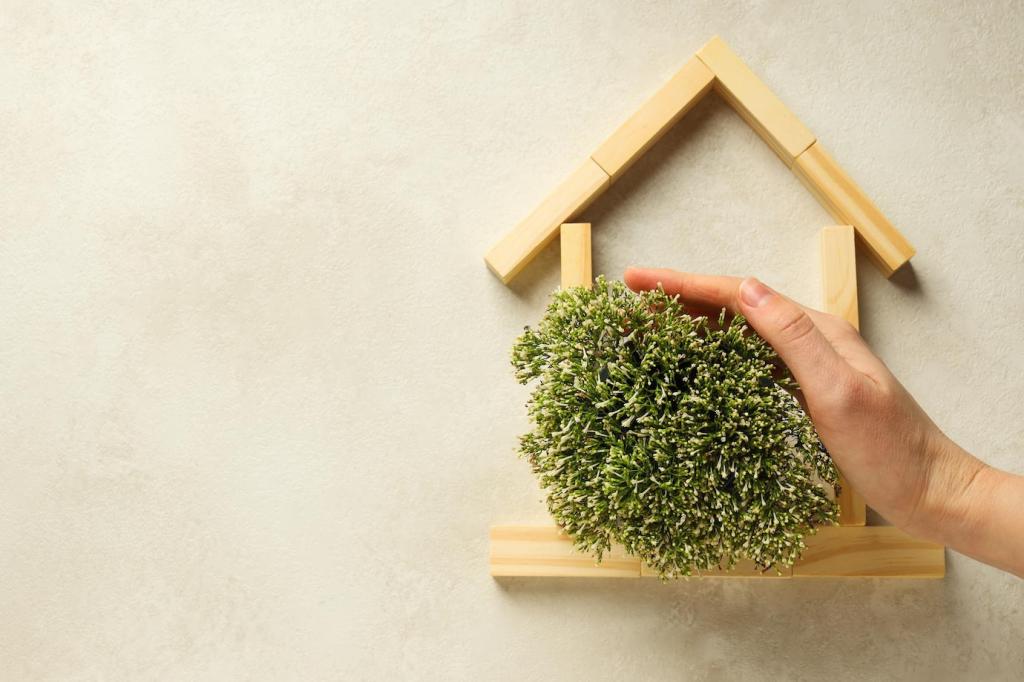Chosen theme: Biodegradable Furniture Cleaning Products. Step into a calmer, greener home where your favorite chairs and tables shine without harsh residues, and every wipe supports a healthier planet. Join our community, share your wins, and subscribe for fresh, practical inspiration.




Look for alkyl polyglucosides and other sugar-based surfactants derived from corn or coconut. They reduce surface tension, letting you wipe away oily fingerprints without stripping finishes. Their mildness helps prevent hazing on varnish and clouding on lacquer while keeping delicate fibers from matting.

Citric acid softens mineral deposits and helps neutralize odors, while sodium bicarbonate buffers formulas without being abrasive. The right pH balance protects wood sealants and metal coatings. Always test on a hidden spot, since different finishes—from shellac to polyurethane—respond uniquely to even gentle chemistry.

Natural enzymes can break down food stains on upholstery, but avoid them on protein-based materials like silk. Fragrance-free options reduce allergy risks, and essential oils should be used sparingly to prevent buildup. When in doubt, choose minimal, transparent ingredient lists and always spot test with a microfiber cloth.
Surface-Specific Care: Wood, Upholstery, Leather, and Metal
Use a damp, not wet, microfiber cloth with a mild, plant-based cleaner. Follow the grain, and dry immediately. Avoid heavy oils that attract dust. For occasional conditioning, a biodegradable wax blend with small amounts of jojoba and beeswax can revive sheen without leaving sticky residue.


Surface-Specific Care: Wood, Upholstery, Leather, and Metal
Apply a biodegradable foam or diluted solution to the stain’s perimeter, then work inward to prevent spreading. Blot, never rub, and ventilate well. For colorfastness, pre-test behind cushions. Natural-bristle brushes lift fibers gently, restoring loft on tired armrests and keeping fabrics comfortable to the touch.
Packaging with a Purpose: Refill, Reuse, Recycle
Choose concentrated formulas in glass or recycled bottles and dilute at home. Many local stores now offer refill stations, helping you reuse durable spray bottles. This approach reduces shipping weight, shrinks your recycling bin, and makes it easier to stick with a greener cleaning routine long term.

Performance Myths, Tested
Using a plant-derived surfactant and a timed 60-second dwell, rings lifted cleanly with minimal pressure. A final dry buff restored shine without streaks. The key was gentle agitation and patience, not brute force, proving greener options can compete head-to-head with conventional formulas on everyday spills.
Routine and Safety: Families, Pets, and Allergies
Opt for unscented, dye-free formulas or products with minimal essential oils. Wear gloves if needed, and keep rooms ventilated. Always patch test on finishes and fabrics. If someone at home is scent-sensitive, clean when they are out and store bottles sealed to avoid residual odor.


Routine and Safety: Families, Pets, and Allergies
Wipe surfaces thoroughly and let them dry before curious paws or noses return. Keep cats from licking freshly cleaned furniture, and use lint rollers to reduce fur before applying cleaners. Share pet-related challenges in the comments—our community has clever, gentle tricks for every furry situation.
Practical Recipes and Smart Use
Everyday wood wipe solution
Combine one cup distilled water with one teaspoon mild castile-based cleaner. Lightly mist a microfiber cloth and wipe with the grain. Buff dry immediately. This keeps fingerprints at bay without swelling wood or leaving oily films that attract dust and dull protective finishes.
Upholstery spot method for common spills
Mix one cup distilled water with half a teaspoon plant-based detergent. Apply foam to a cloth, dab the perimeter, and blot inward. Rinse cloth and repeat until clear. Air dry with a fan. Avoid heat on stains, which can set them and complicate future cleaning.
Finish-friendly care and disposal reminders
Avoid strong acids on stone-topped furniture and excessive moisture on veneer edges. Use minimal product, maximize clean water rinses, and dry thoroughly. Empty rinses into the sink responsibly, and recycle packaging. Subscribe for our monthly checklist so every room gets the right gentle treatment.
